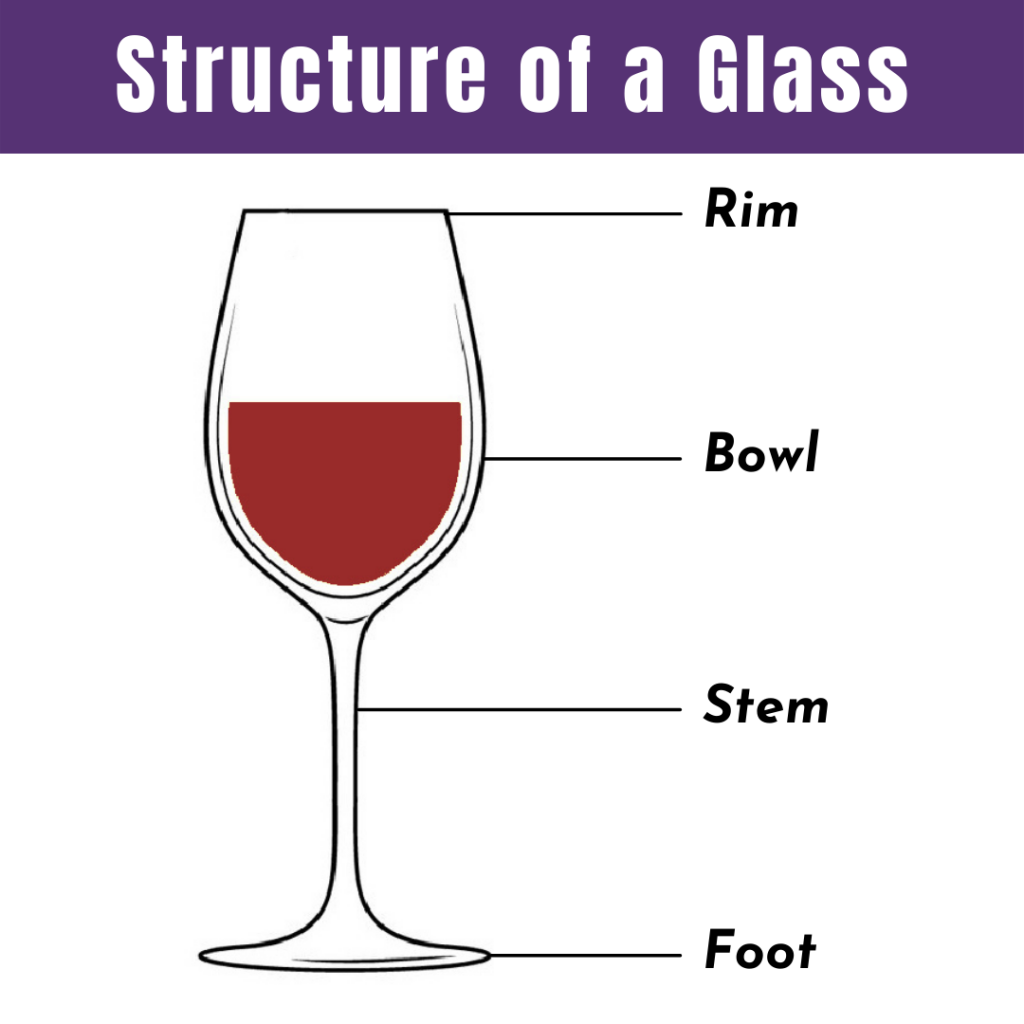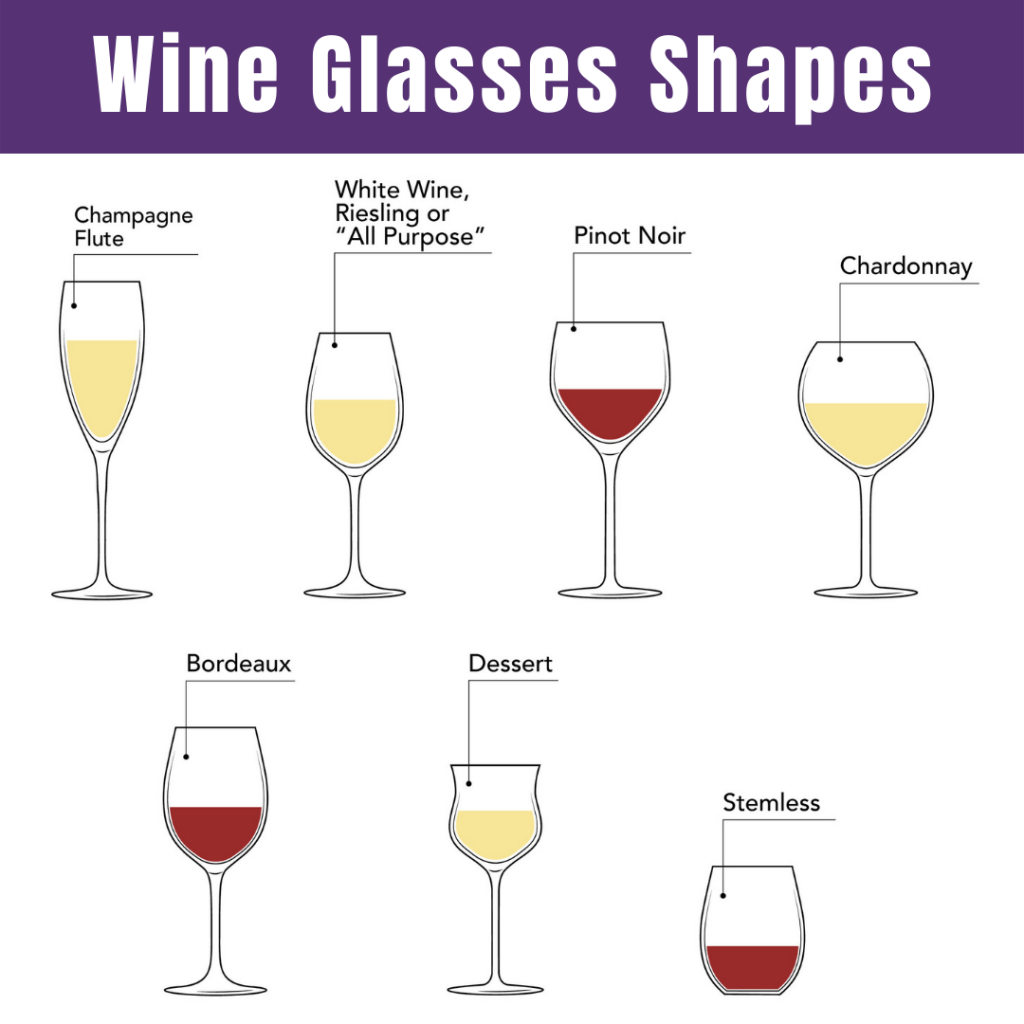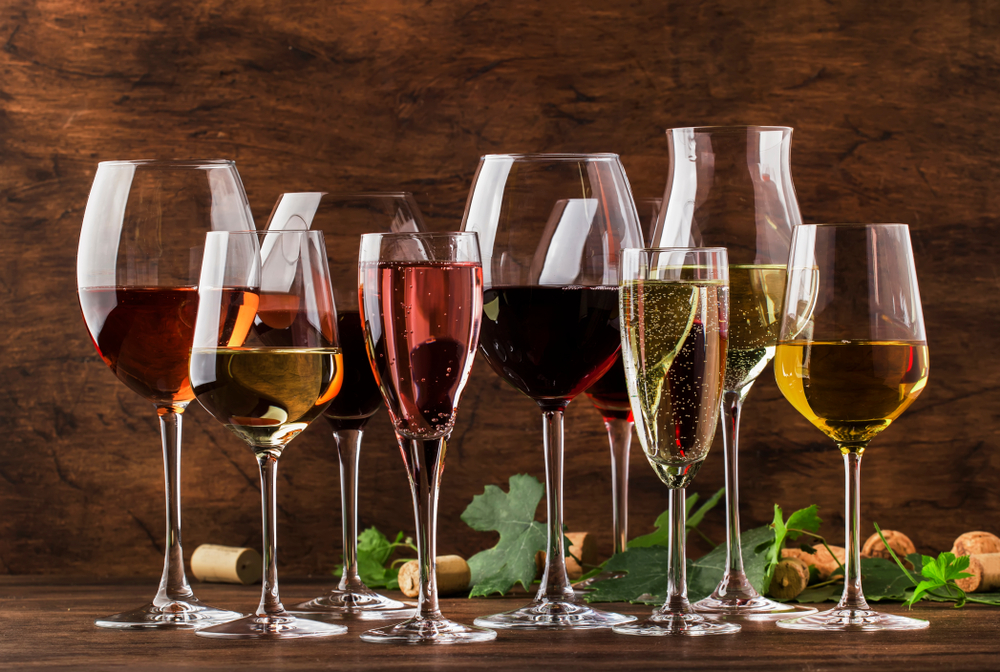To fully appreciate wine, you need the right tools. Explore this comprehensive guide to different types of wine glasses to enhance your tasting experience.
Enjoying wine is an art form of its own, and there are certain rules and conventions that most enthusiasts and experts follow in order to fully appreciate the experience. Many newbies find the ins and outs of wine culture surprising and a bit overwhelming. After all, who knew you needed specific tools to drink your favorite wine?
To ease you into the wonderful world of wine, we’ve put together a comprehensive guide to different types of wine glasses. Here, you’ll learn about the importance of your drinkware, why it matters, and the many kinds of glasses you may encounter. This information will help you make the most out of your tasting adventure.
Why Does the Type of Glass Matter?
The glass you use can make or break your experience. Drinking wine is as much a science as it is an art. A lot of research has gone into determining which glasses pair well with certain wines. Glass designs bring out characteristics of the wine that would otherwise go unnoticed in a regular drinking cup or mug.
The glass you use affects aspects such as aroma, taste, and color. Different wines need room to “breathe” to express these qualities clearly. If you use the wrong kind of glass, you risk missing out on nuances that make the wine so delicious.
Structure of a Glass
There are several types of wine glasses to choose from, but most have the same anatomy. This guide to different types of wine glasses wouldn’t be complete without explaining their various parts. All of these pieces work together to bring out the most important traits of your favorite wine.
Foot
The foot of a wine glass acts as a base to stabilize the drinkware. It doesn’t affect the taste of the wine, but it does influence the drinker’s experience. A small foot risks spillage, while a big one may get in the way and take up too much room.
Stem
From the foot of your glass comes the stem, a thin piece of material that connects the base to the bowl. Holding your glass from the stem protects your wine from body heat, which could raise its temperature. It also keeps everything looking nice by preventing smudging from your fingertips.
Bowl
This part of the glass acts as a vessel for the wine. The bowl affects scent and taste by creating the right surface area for a wine to “breathe.” Red wines usually need large bowls to accommodate their intense flavor profiles, while white wines need smaller bowls to help with temperature regulation.
Rim
Even though it’s minor, the rim is an essential structure of a wine glass. Quality glasses will have thin rims that help the beverage flow from bowl to mouth with ease. The thickness of the rim also affects the way you perceive taste.

Red Wine Glasses
Bold and robust, red wine is a favorite among connoisseurs who enjoy complex flavors. As we mentioned earlier, wine needs room to “breathe” to display all its incredible tastes and smells. Red wine glasses typically have deep, wide bowls with large openings that give the wine space to oxidize.
Red wine glasses have similar structures, but their designs have subtle differences that depend on the red inside. Common red wine glasses include:
- Pinot Noir: for light reds such as Pinot Noir
- Burgundy: for soft reds
- Bordeaux: for heavy reds with high tannins
- Cabernet: for bold reds such as Cabernet
White Wine Glasses
People who like things on the sweeter side typically enjoy white wine. White wine glasses are smaller than reds and U-shaped to preserve soft aromas and keep temperatures low. Their general design guides aromas to your nose to make them easier to detect.
Like red glasses, most white wine glasses look the same. However, there are minor changes to each glass to boost their flavor profiles. Types of white wine glasses include:
- Montrachet: for complex whites
- Sauvignon Blanc: for light and fruity or floral whites such as Sauvignon Blanc
- Resiling: for sweet whites
- Chardonnay: for full-bodied whites such as Chardonnay
Sparkling Wine Glasses
No celebration is complete without a toast of sparkling wine. This includes drinks such as Champagne or Prosecco, which go great with juice to make the perfect mimosa. Sparkling wine glasses are small and narrow, making them ideal for preserving the carbonation and flavors that everyone loves.
The main kinds of sparkling wine glasses are flutes and tulips. They’re both short and slim to direct carbonation to your tongue instead of to your nose. Coupe glasses have broad but shallow bowls; they’re often used at themed events where your favorite bubbly becomes a delicious cocktail.
Rosé
You have two options when it comes to Rosé glasses: flared rims or tapered rims. Flared-rimmed glasses are best for young Rosés, enhancing enhances sweetness. Tapered-rimmed glasses work well with mature Rosés, enhancing their full-bodied qualities.
Dessert Wine Glasses
People looking for super-sweet, highly concentrated beverages should check out dessert wines. These glasses look short and have a unique design that leads your drink to specific parts of your mouth. The goal is to encourage drinkers to savor this special kind of wine and all of its intricacies.
Dessert wine glasses also come in two forms: a port glass and a sherry glass. Port wine glasses are short enough to keep aromas strong while leaving enough room to swirl and open up flavors. A sherry glass’s narrow design directs the wine to the back of your mouth to balance out its sweetness.
All-Purpose Glasses
Finally, if you find that your choices in drinkware are limited, all-purpose glasses are the way to go. They offer users the best of both worlds by incorporating red and white glass features in their designs. These glasses usually cost less while providing a similar tasting experience.
All-purpose glasses are either stemmed or stemless. Stemmed glasses assist in user experience and are acceptable for both red and white wines. Stemless glasses may warm up faster, but they’re good novelty gifts for the wine beginners in your life.
Now that you know about the kinds of glassware available, you’re ready to embark on your wine journey. Invite your friends along for the ride by sending them a wine-by-mail gift courtesy of Wines ’Til Sold Out. Your favorite vino is just a click away!





The blog was very insightful, Thank you for sharing it with us wine lovers.
You can also check out all sorts of wine glasses on our website.
Lucaris Crystal
It is our pleasure Lucaris. Stay tuned for our next blog.
Cheers,